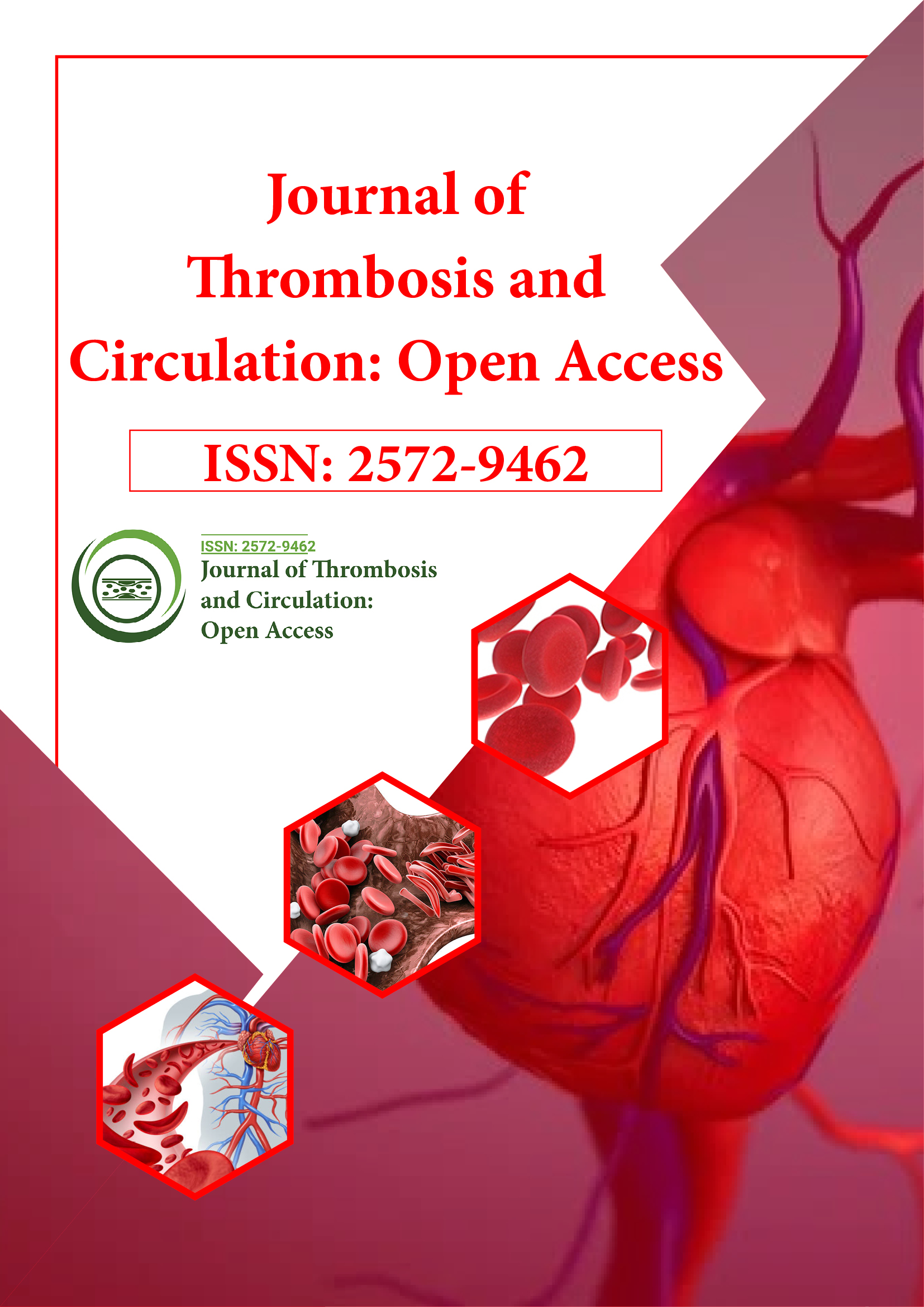Indexed In
- RefSeek
- Hamdard University
- EBSCO A-Z
- Publons
- Google Scholar
Useful Links
Share This Page
Journal Flyer

Open Access Journals
- Agri and Aquaculture
- Biochemistry
- Bioinformatics & Systems Biology
- Business & Management
- Chemistry
- Clinical Sciences
- Engineering
- Food & Nutrition
- General Science
- Genetics & Molecular Biology
- Immunology & Microbiology
- Medical Sciences
- Neuroscience & Psychology
- Nursing & Health Care
- Pharmaceutical Sciences
Commentary - (2024) Volume 10, Issue 4
Platelet Parameters as Potential Biomarkers in Thrombosed Hemorrhoids
Eleanor Fraser*Received: 29-Nov-2024, Manuscript No. JTCOA-24-28428; Editor assigned: 02-Dec-2024, Pre QC No. JTCOA-24-28428 (PQ); Reviewed: 16-Dec-2024, QC No. JTCOA-24-28428; Revised: 23-Dec-2024, Manuscript No. JTCOA-24-28428 (R); Published: 30-Dec-2024, DOI: 10.35248/2572-9462.24.10.287
Description
Thrombosed hemorrhoids represent a significant clinical burden, causing acute pain, swelling and discomfort due to the formation of a blood clot within an external hemorrhoidal vein. Despite their common occurrence, the exact pathophysiological mechanisms leading to thrombosis in hemorrhoids remain poorly understood. One of the emerging areas of interest is the role of platelet parameters in the development and progression of thrombosed hemorrhoids. Given that platelet activation and aggregation are central to thrombus formation, examining platelet indices such as Mean Platelet Volume (MPV), Platelet Distribution Width (PDW) and platelet count may provide insights into the underlying mechanisms contributing to hemorrhoidal thrombosis.
Platelets play a fundamental role in hemostasis and thrombosis, responding to vascular injury by initiating the coagulation cascade. Their ability to form aggregates and interact with the endothelium is influenced by both systemic and local factors. In conditions characterized by increased platelet activation, larger and more reactive platelets circulate in the bloodstream, as indicated by elevated MPV. This parameter has been associated with various thrombotic disorders, including deep vein thrombosis, myocardial infarction and ischemic stroke. Given that thrombosed hemorrhoids involve clot formation within the dilated hemorrhoidal veins, an increase in MPV could signal a hypercoagulable state, predisposing patients to localized thrombosis.
PDW, another important platelet parameter, reflects the variability in platelet size and is often used as an indicator of platelet activation. Increased PDW suggests a heterogeneous population of platelets, with a greater proportion of activated platelets contributing to thrombus formation. In patients with thrombosed hemorrhoids, an altered PDW may suggest an underlying systemic predisposition to thrombosis. Furthermore, fluctuations in platelet count could provide additional insights into the dynamic interplay between platelet activation and consumption during hemorrhoidal thrombosis.
While the primary triggers for hemorrhoidal thrombosis are thought to be related to increased intra-abdominal pressure, straining and venous stasis, platelet dysfunction may represent an overlooked factor in its pathogenesis. Patients with systemic inflammatory conditions, metabolic syndrome, or coagulation disorders may exhibit altered platelet activity, increasing their susceptibility to hemorrhoidal thrombosis. This raises an important question: Could platelet indices serve as early biomarkers for assessing the risk of thrombosed hemorrhoids?
Emerging evidence suggests that platelet parameters have diagnostic and prognostic value in various thrombotic disorders. For example, elevated MPV has been linked to a higher risk of arterial and venous thrombosis, while an increased PDW has been correlated with inflammation-driven hypercoagulability. Although there is limited research specifically examining these markers in thrombosed hemorrhoids, their potential utility in identifying high-risk individuals cannot be overlooked. If validated through larger clinical studies, platelet indices could serve as an adjunct tool in the risk stratification of patients prone to recurrent thrombosed hemorrhoids.
The implications of platelet involvement in hemorrhoidal thrombosis extend beyond risk assessment. From a therapeutic standpoint, the question arises whether antiplatelet therapy could play a role in preventing or managing thrombosed hemorrhoids. While conservative measures such as dietary modifications, topical treatments and surgical intervention remain the standard of care, patients with recurrent thrombosed hemorrhoids may benefit from a broader evaluation of their coagulation profile, including platelet function. However, given the localized nature of hemorrhoidal thrombosis and the systemic effects of antiplatelet drugs, the risk-benefit ratio must be carefully considered before incorporating such therapies into clinical practice.
In conclusion, while thrombosed hemorrhoids have traditionally been attributed to mechanical and hemodynamic factors, the potential role of platelet parameters in their pathogenesis warrants further investigation. MPV, PDW and platelet count may serve as valuable markers in assessing thrombotic risk, offering new insights into disease progression and management. Future research should aim to establish the clinical significance of these parameters and investigate whether interventions targeting platelet function could improve outcomes in patients with thrombosed hemorrhoids. A more comprehensive understanding of platelet involvement in this condition could ultimately lead to better risk stratification and novel therapeutic approaches, enhancing patient care and reducing the burden of recurrent hemorrhoidal thrombosis.
Citation: Fraser E (2024). Platelet Parameters as Potential Biomarkers in Thrombosed Hemorrhoids. J Thrombo Cir. 10:287.
Copyright: © 2024 Fraser E. This is an open-access article distributed under the terms of the Creative Commons Attribution License, which permits unrestricted use, distribution, and reproduction in any medium, provided the original author and source are credited.
